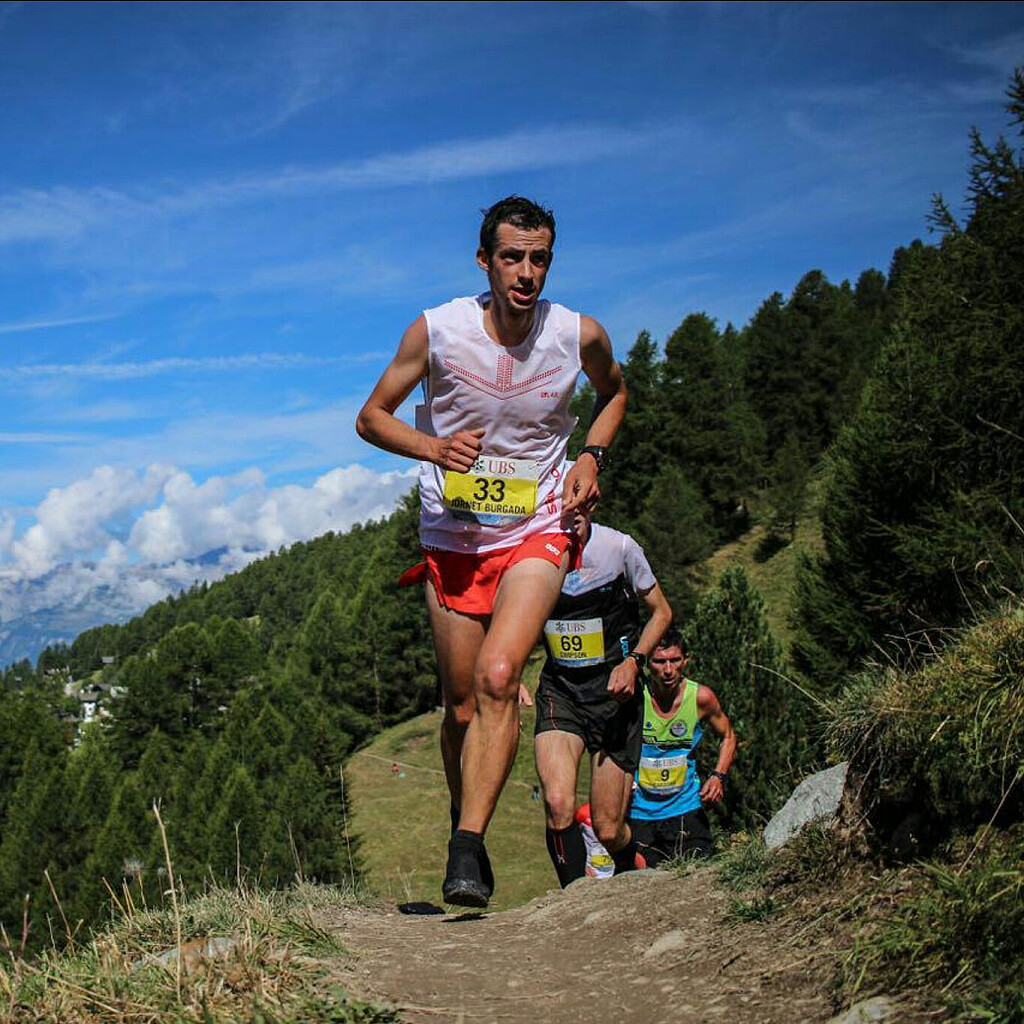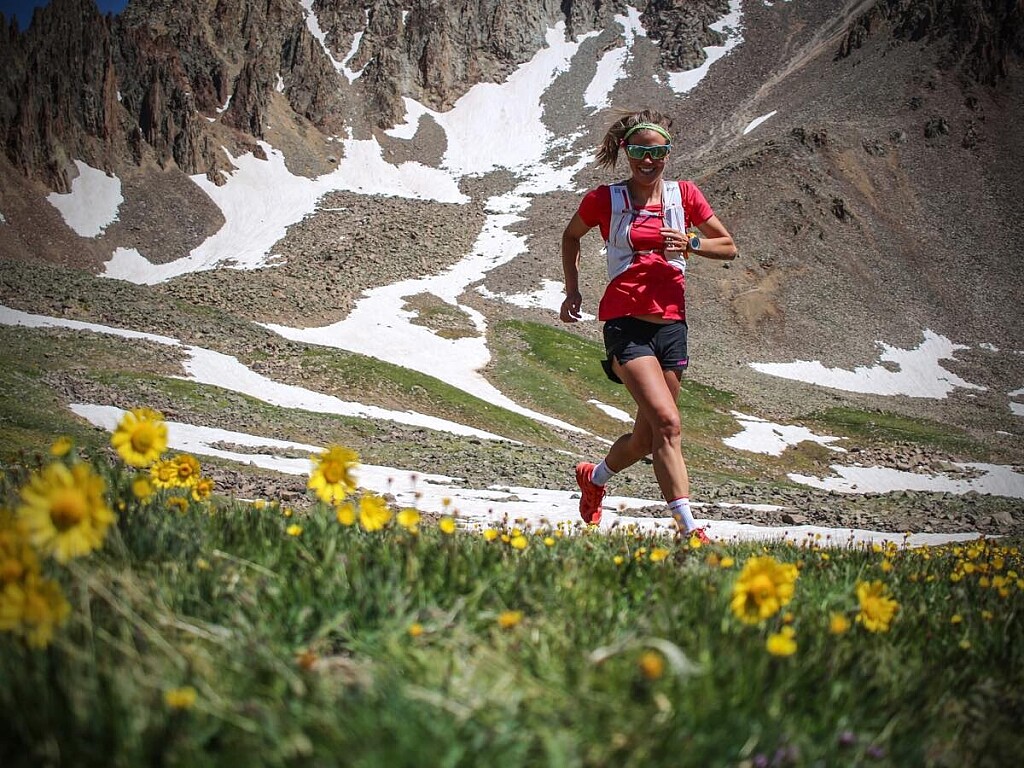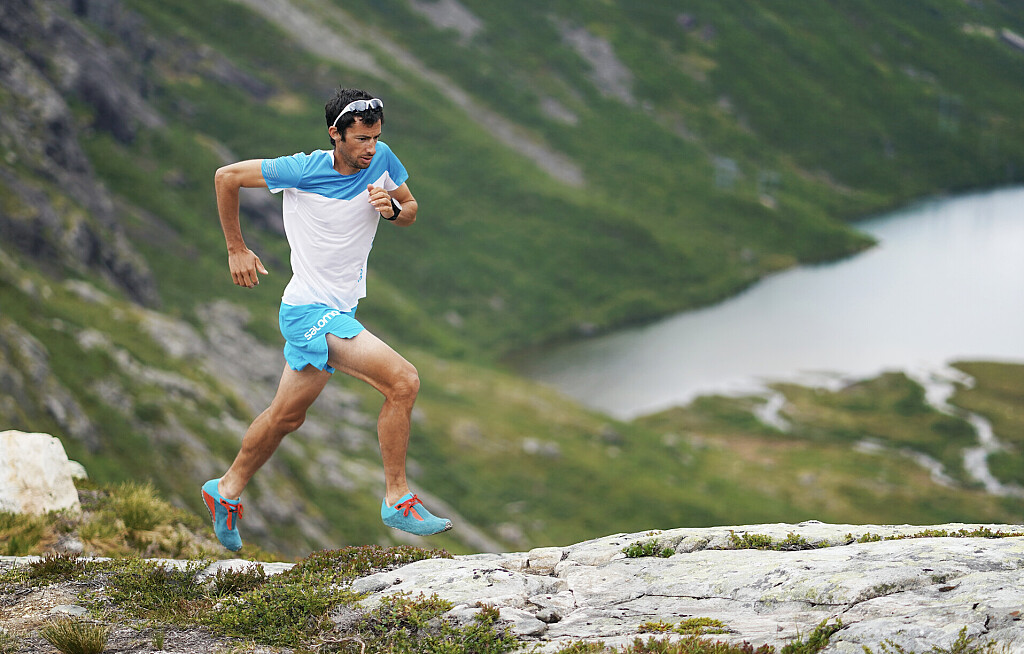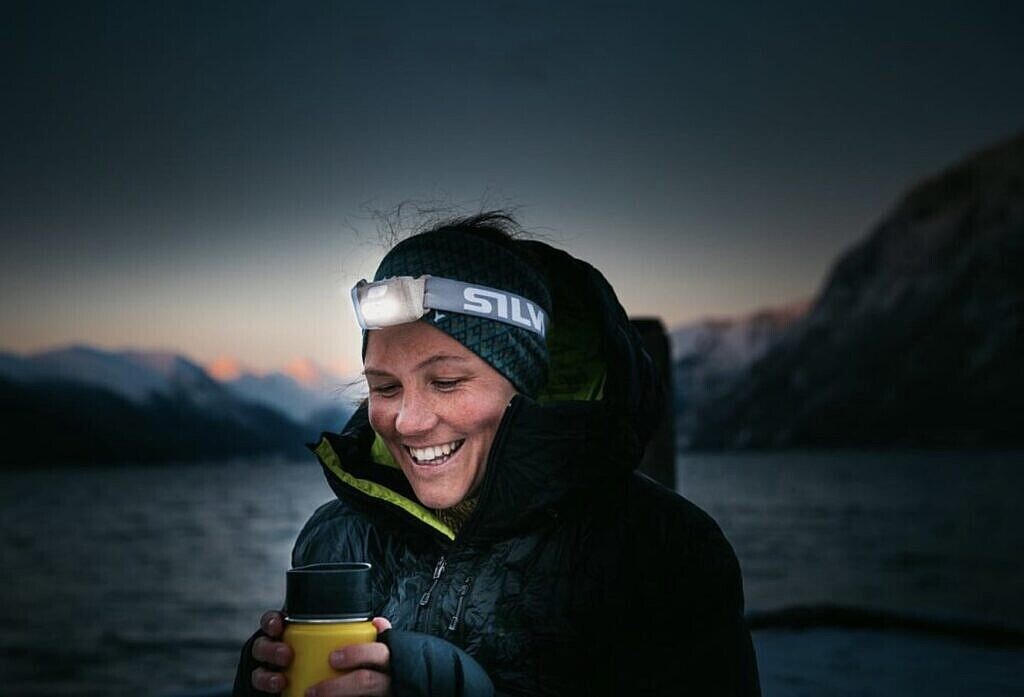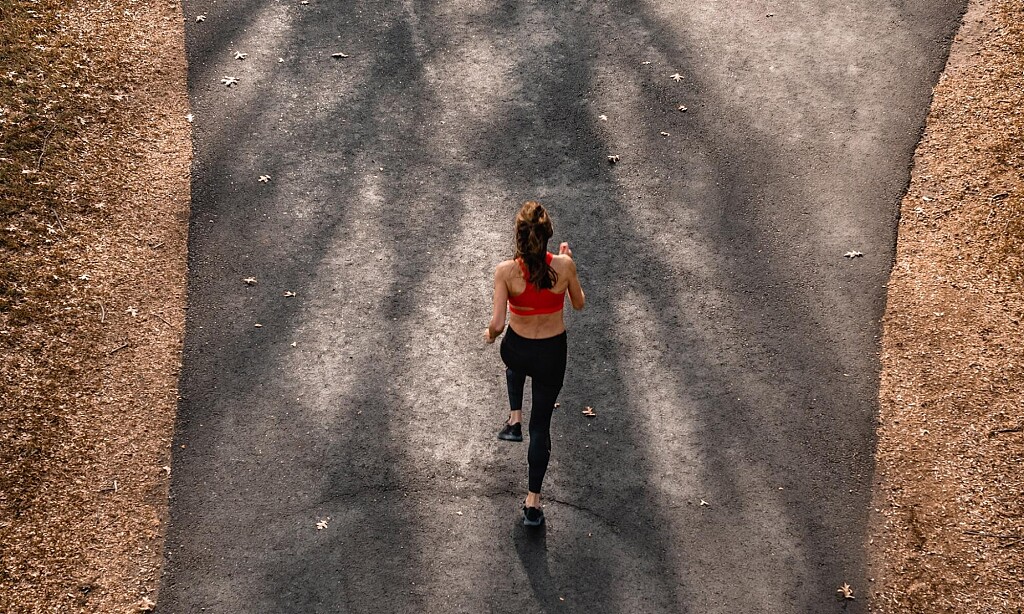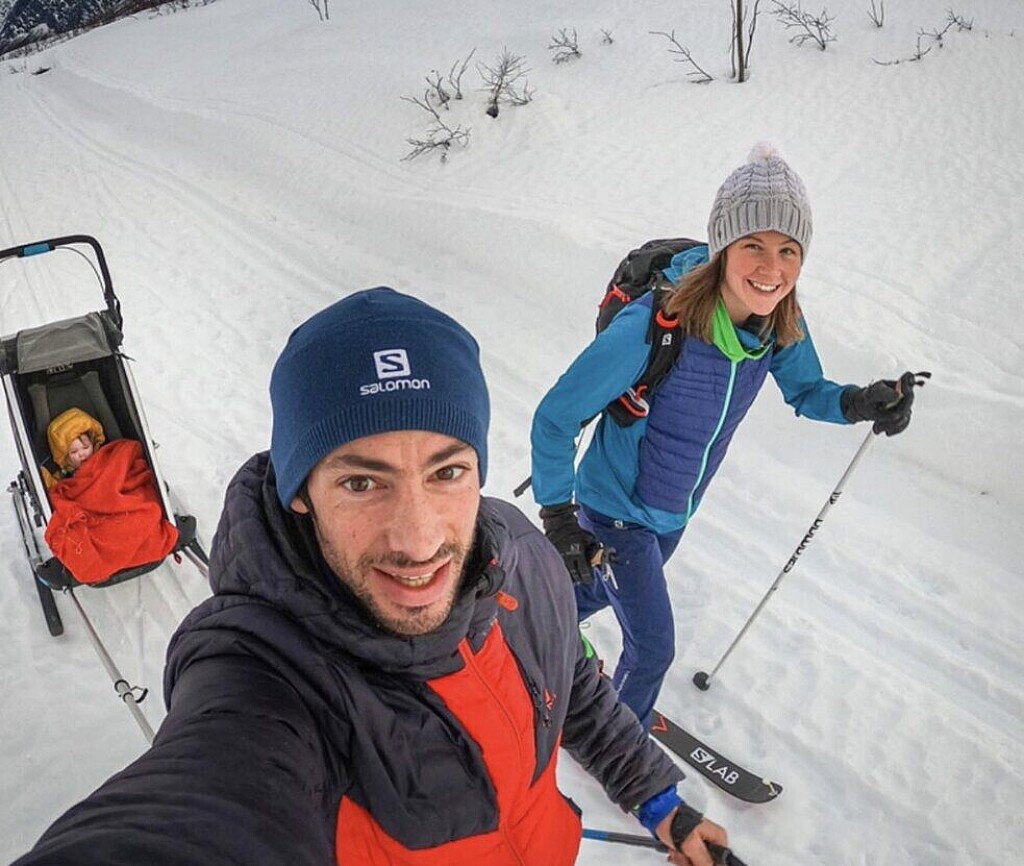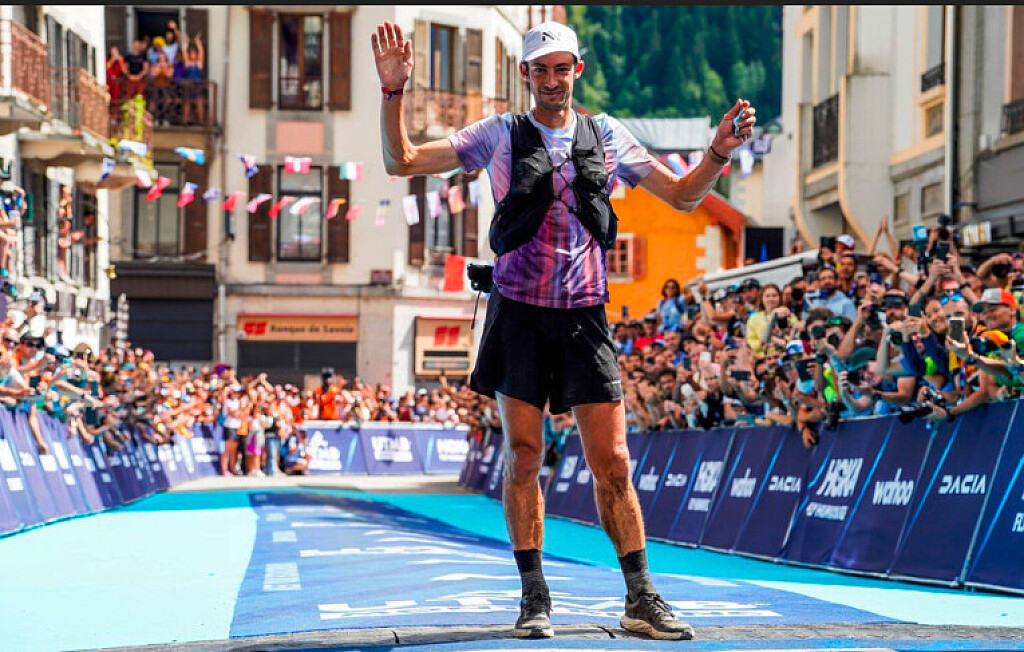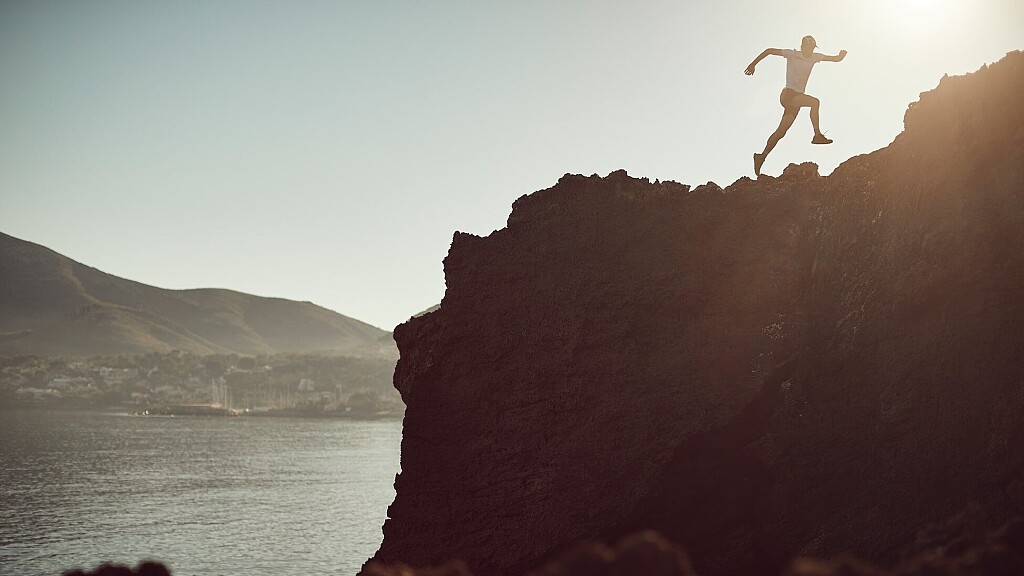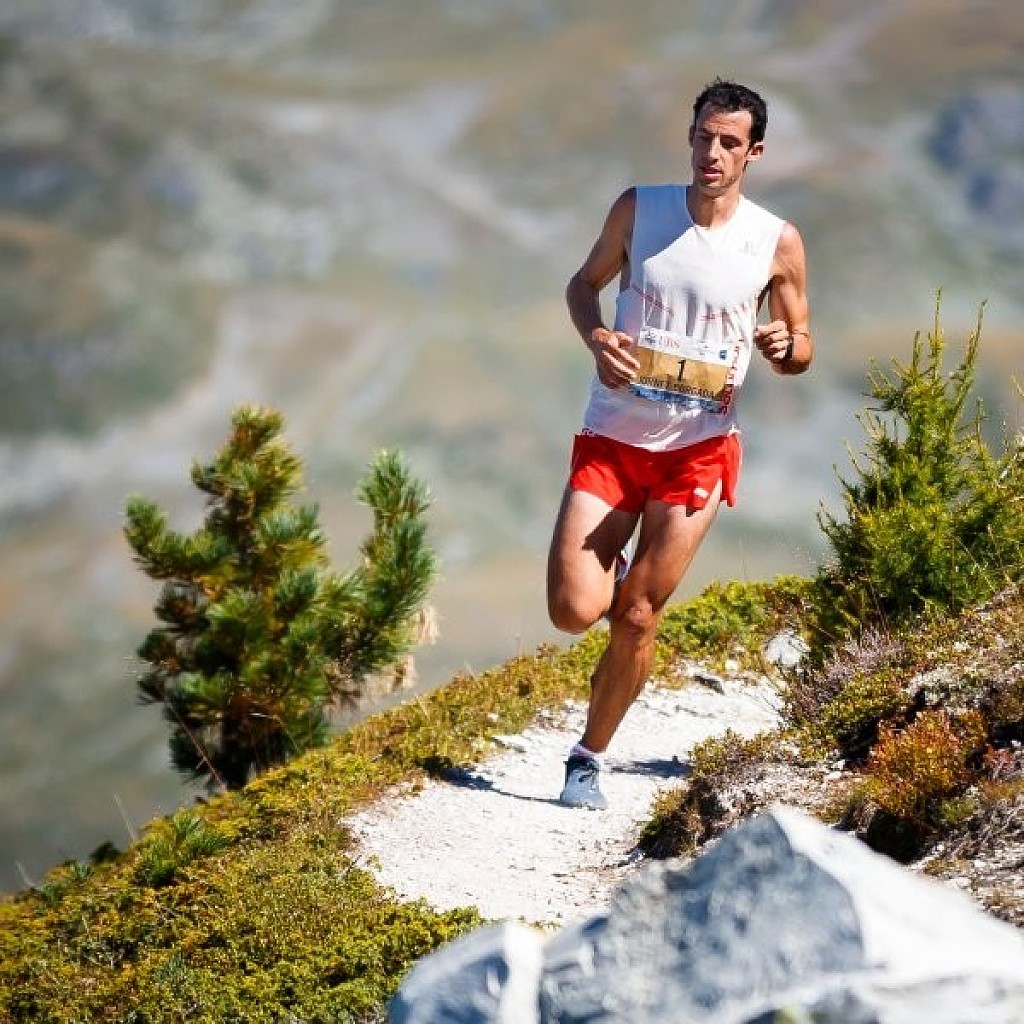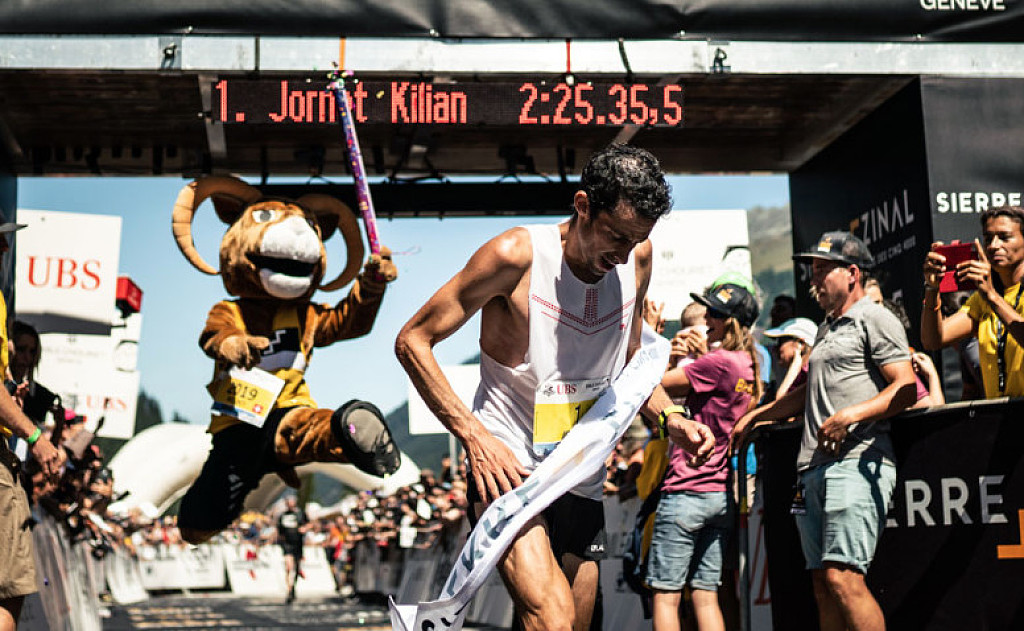Running News Daily
Running News Daily is edited by Bob Anderson. Send your news items to bob@mybestruns.com Advertising opportunities available. Train the Kenyan Way at KATA Kenya and Portugal owned and operated by Bob Anderson. Be sure to catch our movie A Long Run the movie KATA Running Camps and KATA Potato Farms - 31 now open in Kenya! https://kata.ke/
Index to Daily Posts · Sign Up For Updates · Run The World Feed
Articles tagged #Emelie Forsberg
Today's Running News
Kilian Jornet’s 4 secrets to winter training
For iconic trail runner and mountaineer Kilian Jornet, the colder months aren’t a pause in training but rather call for a strategic shift that all runners can learn from.
Nestled in the Romsdalen mountains of Norway, Jornet’s off-season training offers a masterclass in balance, recovery, and preparation for the upcoming challenges of spring and summer racing. In a recent blog post with COROS, Jornet shared his off-season regime, and how you can apply it to your training.
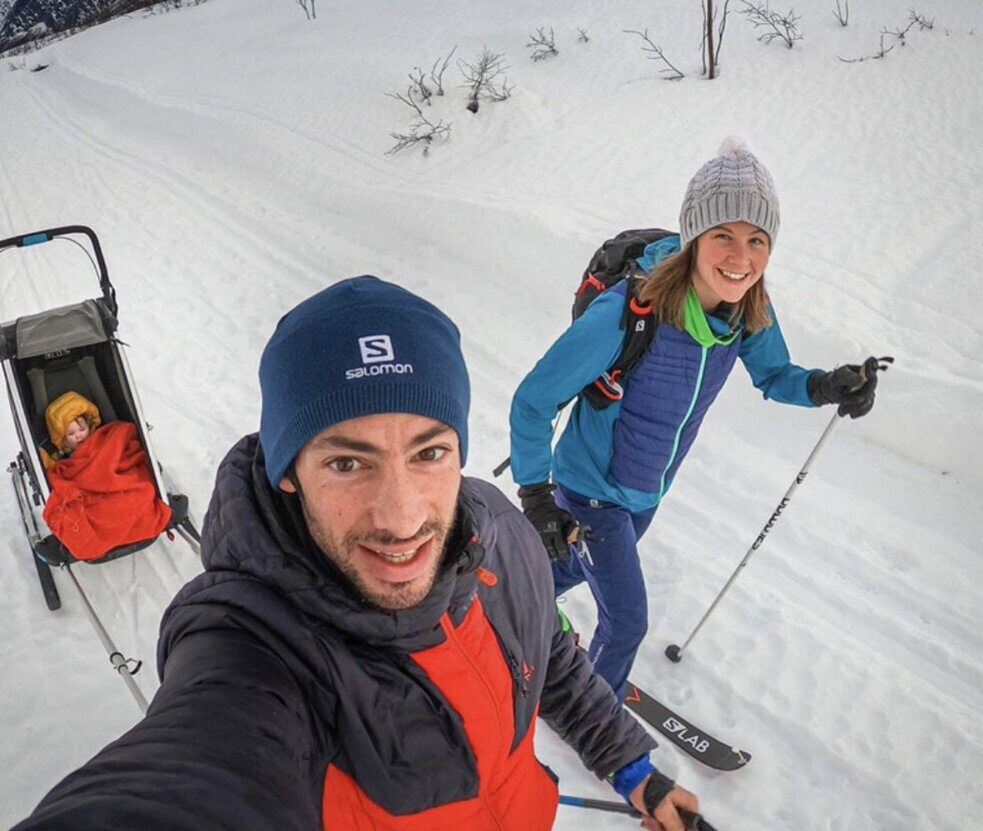
1.- Diversify your training arsenal
Jornet’s usual running playground is snow-covered during winter, prompting a shift from high-mileage running to ski mountaineering and ice climbing. This diversification serves as a reset for both body and mind. While running is an impact activity that can cause some repetitive strain, winter activities like skiing offer endurance benefits without mechanical stress.
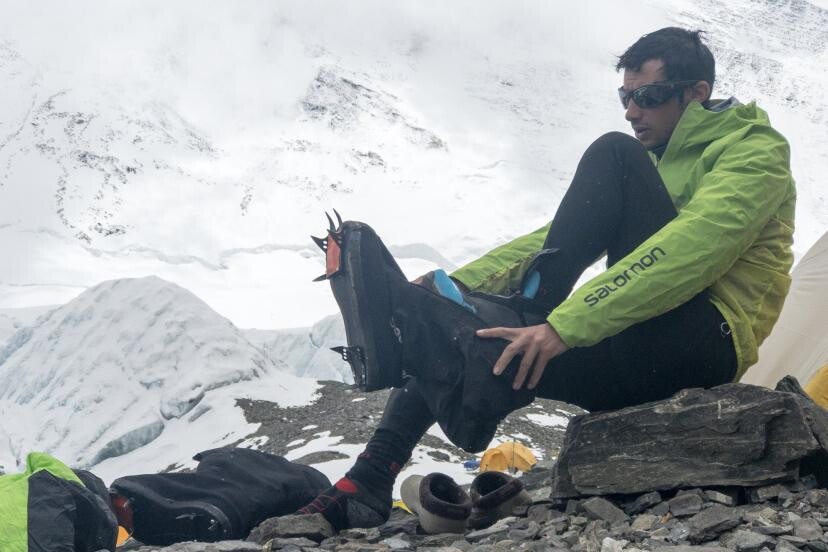
Embracing variety in your training will allow you to build and maintain a robust aerobic base, while minimizing the risk of injury. Trying new things this season, like a cross-country ski lesson, strapping on some snowshoes or spending some time on an indoor bike will have long-term benefits, and you may find a new sport you love.
2.- Focus on the downhill
For Jornet, downhill speed and strength are paramount for ultrarunning success. Instead of relying solely on running for quad strengthening, he incorporates downhill skiing during the winter. This deliberate strategy ensures that his legs are accustomed to intense eccentric loads without the constant impact on muscles and bones. The muscle memory cultivated during cross-training seamlessly integrates into running when the season shifts. Try a downhill workouts to get used to (down) hilly fun.
3.- Prevent injuries for the long-term
By embracing activities with different mechanical loads than running, Jornet not only aids short-term recovery but also secures long-term benefits. Jornet’s temporary departure from a running focus in the summer of 2023, due to injuries, emphasized the importance of cross-training. Make a strategic choice to switch it up so that you can run for as many years as you want.
4.- Enjoy a mental break
While the winter training regimen is robust, Jornet acknowledges the necessity of a mental break. The off-season becomes a time to recharge mentally, allowing a return to spring training with renewed confidence and positivity. Jornet emphasizes the value of a balanced mental state during the winter training grind and recognizes the importance of mood in adaptation. Focus on recovery days and practice fuelling well during the off-season. Try one of the recipes Jornet and his partner, Emelie Forsberg, love to make.
Jornet’s winter training philosophy isn’t just for elite athletes— it holds lessons for all who seek to balance intensity, recovery, and a focus on mental health and a connection with the changing seasons. His training regime can be used as inspiration for regular runners to explore the transformative power of a well-crafted off-season strategy.
by Keeley Milne
Login to leave a comment
Kilian Jornet pulls out of UTMB with injury
While the roster of talented athletes ready to jostle for the win at the 171-km Ultra Trail du Mont Blanc (UTMB) on Sept. 1 is still ridiculously deep, one notable competitor will be absent: four-time winner and course record holder Kilian Jornet.
The athlete announced on social media Thursday that he would not be attending due to an injury that hasn’t healed. “No UTMB for me this year,” Jornet shared. “I still can’t run due to the sacrum injury so we decided it was better to prioritize a good recovery and try to do something fun when the pain disappears.”
Fans were eager for a rematch between Jornet and Canadian Mathieu Blanchard, who will be vying for his third consecutive podium finish in Chamonix. Blanchard ran last year’s race in 19 hours, 54 minutes and 50 seconds to finish a close second behind Jornet, who ran 19:49:30, setting a new course record.
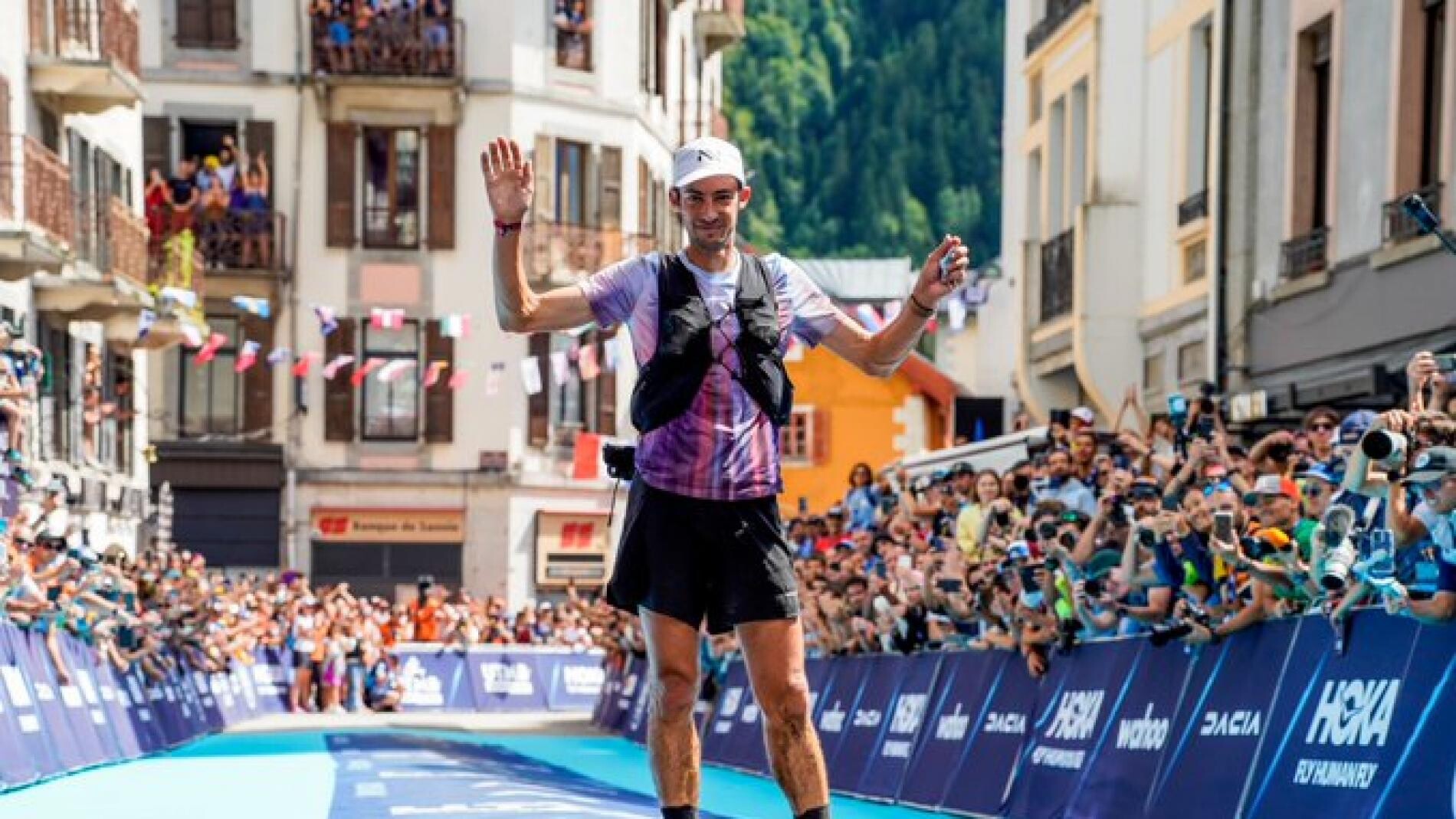
Jornet battled through injury in the Eiger Ultra Trail by UTMB, vying for a UTMB Running Stone that would allow him to compete in the final UTMB event in Chamonix. While Jornet leads the UTMB Index with a 945 rating, he needed to finish the race to become a contender in the final. The athlete injured his sacrum in training two days before Eiger Ultra, but fought through to finish in 48th place in a race won by 16-year-old Swiss athlete Lorick Buclin (1:21:26).
“Some days before Eiger Ultra trail I started to feel pain in my right hip, Jornet shared on Instagram. “I thought it was a muscle problem or tendinitis that would go away with some easy days, but after a check we found out it’s a bone edema.” The multi-sport mountain athlete explained that he suspected the cause was returning to big running weeks too quickly after a Himalayan expedition that left him with broken ribs and a hip injury.”It feels it’s a bad timing to get this injury so close to the races but managing injuries and recovery is part of an athlete’s life,” he said.
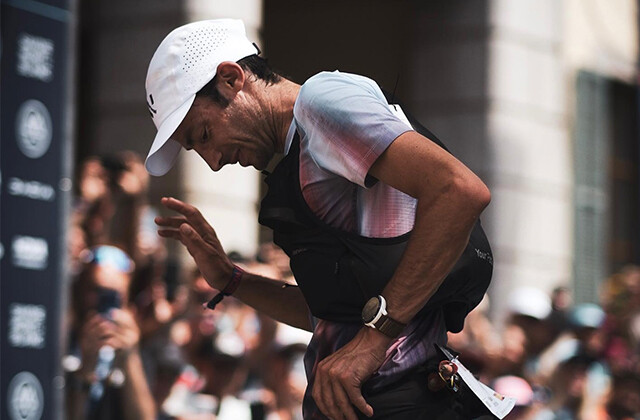
While Jornet expressed hopes in late July that he would be able to line up along the likes of Americans Jim Walmsley and Courtney Dauwalter, British ultrarunner Tom Evans and Canadian Blanchard, the athlete decided against it. Fans can hope to see him crewing his wife, Swedish ultrarunner and ski mountaineer Emelie Forsberg, who will be lining up at CCC (Courmayeur–Champex–Chamonix), the 100K race at the UTMB World Series Finals.
Jornet is somewhat of a legend at UTMB, first winning the race in 2008 as a 20-year-old and returning to win 2009, 2011 and 2022. Jornet has a long list of accomplishments and holds the fastest known time speed record for the ascent and descent of major mountains, including the Matterhorn and Mont Blanc.
by Keeley Milne
Login to leave a comment
North Face Ultra Trail du Tour du Mont-Blanc
Mountain race, with numerous passages in high altitude (>2500m), in difficult weather conditions (night, wind, cold, rain or snow), that needs a very good training, adapted equipment and a real capacity of personal autonomy. It is 6:00pm and we are more or less 2300 people sharing the same dream carefully prepared over many months. Despite the incredible difficulty, we feel...
more...Hate hills? Here’s how to change that, pro ultrarunner Emelie Forsberg shares her tips and favorite uphill workouts
Hill workouts can be tough. They are also a powerful tool for building strength, making your body injury-resistant, and translate to speed on the flats: if you can learn to enjoy them it’s much easier to get out there.
“I love the feeling of being able to push myself to the max, as if the resistance is my friend,” Norway-based ultrarunner and ski mountaineering pro Emelie Forsberg shares in her book Sky Runner.

Try these tips and workouts to find your groove as you test out (or build on) your hill-climbing abilities. You, too, may soon be loving your uphill sessions.
Find the right technique

Forsberg suggests trying to make hill running as comfortable as possible by finding the right technique for the hill you’re on. For very steep hills she suggests switching between two methods of climbing: walking very fast with large strides, pushing against your thighs with your hands and arms, and taking shorter, faster steps with a higher turnover rate.
“Neither of these are faster than the other, but it’s nice to switch between the two techniques to use different muscle groups,” Forsberg explains, noting that she finds the shorter strides harder so opts to work on them more often in training. “I want to train with what I’m less comfortable with.”
Easier hill intervals
Forsberg suggests trying this session (adjusting the number of intervals to your ability) if you’re new to hills or returning to interval training, and says the pace and effort “should feel manageable the entire time.”
Warm up with 10 minutes easy running
10 x 2 minutes, easy run downhill for recovery (approx one minute)
Cool down with 10 minutes easy running
Hill sprints
“This is a very explosive exercise that can be very hard,” shares Forsberg, suggesting runners start moderately with fewer repetitions and increase accordingly. “It’s much more fun to get a positive surprise rather than never wanting to do the exercise again,” she explains. We definitely agree.
Warm up with 10 minutes of easy running
10 x 30 seconds of hard running with 30 seconds rest
Repeat 3x, with 2 minutes of recovery time in between each block
Cool down with 10 minutes of easy running
After a challenging uphill or speedwork session, make sure to take a recovery day or do some very easy running.
by Keeley Milne
Login to leave a comment
Kilian Jornet Won the Biggest Races and Launched His Own Apparel Brand
Heading into the 2022 ultramarathon season, Spanish runner Kilian Jornet hadn't contested a 100-mile race since 2018, when he dropped out of the Ultra-Trail du Mont Blanc (UTMB) following an allergic reaction from a bee sting. In the ensuing years, Jornet, now 35, had two children with his partner, Swedish ultrarunner Emelie Forsberg, and he launched his own trail-running footwear and apparel brand, NNormal. Fatherhood and entrepreneurship didn't slow him down, however; the running world's greatest of all time began the season with a win at Sweden's 100-mile Tjrnarparen Trail Ultra. He then pulled off an audacious double, winning Colorado's Hardrock 100 as well as the UTMB-and set course records in both events. Outside spoke with Jornet about his remarkable year.
OUTSIDE: You've done several 100-mile races in 2022 after a few years running shorter events. Was that a planned break? KILIAN JORNET: In 2019, I wanted to focus on shorter distances, with the Golden Trail Series and an Everest expedition. In 2020, I wanted to spend time with my family. To try something different, I trained mostly on roads. In 2021, the focus was on a trip to the Himalayas and getting fast in short distances, specifically the vertical kilometer.
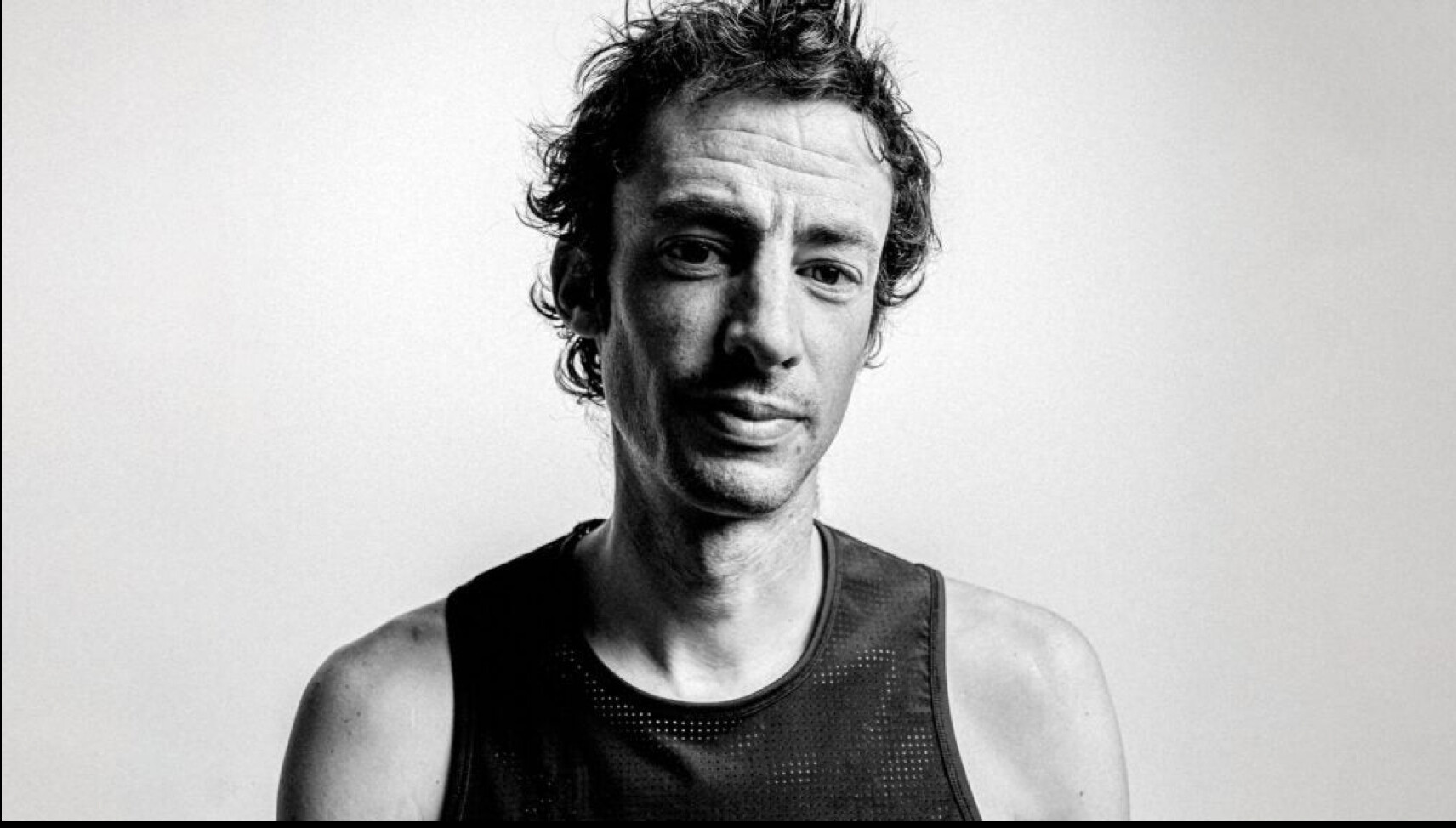
Your long-term partnership with Salomon ended last year. What made you decide it was time to do your own thing? I've always been a geek when it comes to gear. I had the idea of developing something on my own, but it was more a dream than a project. Then last year, through a mutual friend, I met the Fluxa family, who own Camper shoes, and told them that I wanted to do something in the outdoor space. Since the first conversation, we saw that we shared the same values and vision around social and environmental responsibility. From there things went fast. I'm very grateful for all the years at Salomon, and for all their support and what we did together, but it was time to do something different.
How did the idea for NNormal come about? We thought that the best way to implement our ideas-in terms of products, marketing, and corporate responsibility-was to create our own company. The benefit of cofounding a company is that you don't need to answer to shareholders at the end of the year, so you can develop your mission without any pressure. Of course, you want it to be economically sustainable, but you can always put product and company values at the forefront.
With the exploding popularity of ultrarunning, do you believe there will be more professional athletes in the near future? In the past five years, I've seen many more athletes becoming professional-not just to survive, but earning a good salary. More brands are creating teams with great resources. I think that will continue, and I hope it increases equality and diversity in the sport. Many of the big competitions have fewer female participants than male, and many of the sponsorships are from brands in Western countries. In this regard, brands have a big role to play, not only in equal sponsorship opportunities, but also when it comes to marketing and communication.
Many outdoor apparel brands say that protecting the environment is an important part of their company philosophy. How does NNormal plan to tackle that challenge? At NNormal we want to focus on durability. That means making products that perform well for a long time and are easy to repair. They should also have emotional durability, which means that they look good today and in five years. We want to make collections that are timeless and not designed according to seasonal trends. It's important to have great standards when it comes to the environmental footprint of the materials as well as the production process. Most important, we want to base our business model not on overconsumption but on finding different ways to be economically sustainable.
The running-shoe market is notoriously competitive. What makes you optimistic that NNormal can succeed? The first thing is to define success. Is it to sell a lot, or to have a quality product? We have a great team of footwear developers-we have the experience of Camper for shoe development and comfort, and we have a very talented group for performance footwear. For our first shoe, the Kjerag, we wanted to make something that performs well on different terrain and over different distances. I think our approach of durability, comfort, and versatility will appeal to many athletes. But we'll see what our customers think.
by Trail Runner Magazine
Login to leave a comment
Make a strong, healthy comeback to running with these tips
"Hurry slowly," says ultrarunner Emelie Forsberg.
Whether you’re returning from injury or took some time off of running because of low motivation or life stress, we have some tips from pro ski mountaineer and ultrarunner Emelie Forsberg, author of Sky Runner, on making your comeback. Norway-based Forsberg (who is ultrarunning GOAT Kilian Jornet‘s partner) has returned to racing after having two children, navigated knee surgery, and maintained her delight in training the entire time. Follow her lead and make a smooth return to tackling your running goals.
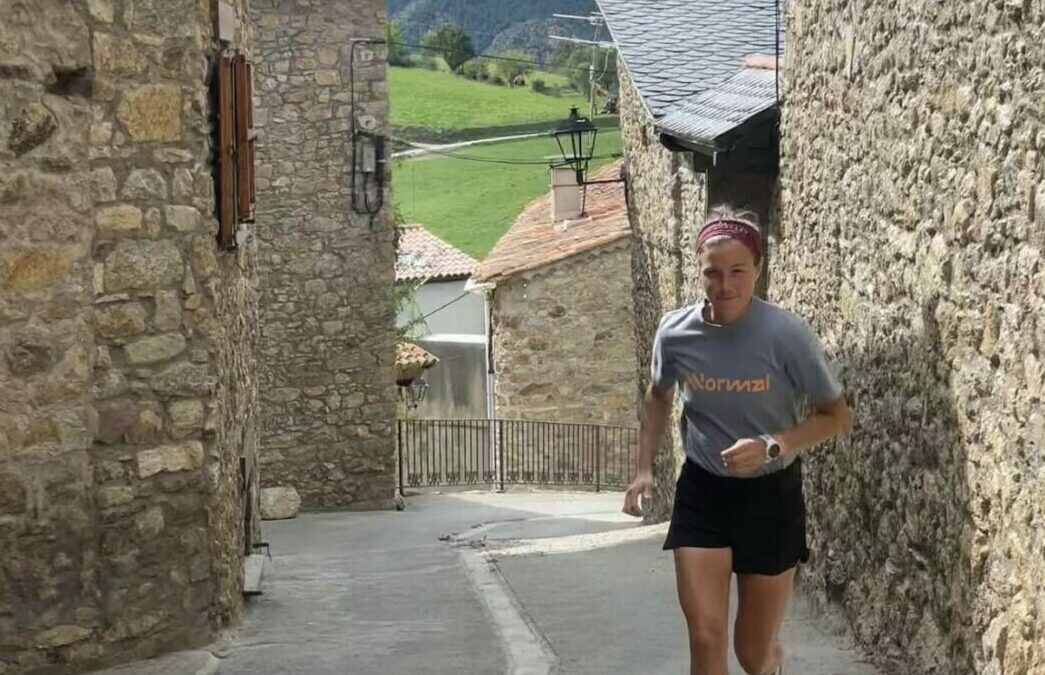
Find your motivation
Forsberg suggests taking a deep mental dive into what you love about running. She notes that your motivation and goals may have changed since you first began, and that’s OK. “Listen to your body and adjust your training according to the new circumstances,” she says.
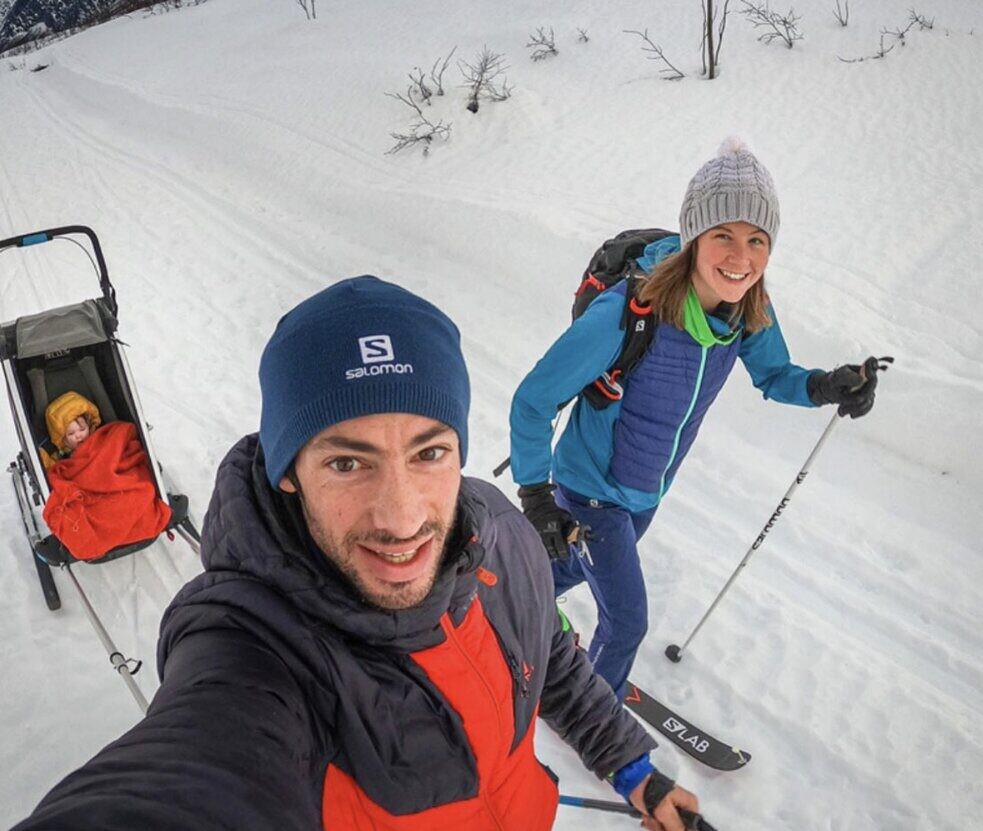
When I went through a stressful period, I had trouble focusing on anything other than the negative: I was fitting in less mileage and running more slowly than I had ever before. Reminding myself that running and moving my body in general (walking was good, too) helped me stay healthy mentally was a great way to adjust my focus, and I was able to move through that period without being too hard on myself.
Build endurance through adventure
Forsberg says she loves taking a day to run solo between huts in the mountains. While that might be a bit ambitious for most, you can adapt similar practices to incorporate fun adventures into training and keep it fresh. Heading to a new-to-you location to fit in a longer run, or exploring with friends, and pausing for a fun lunch can be great ways to keep your journey back to peak form gentle and enjoyable.
Forsberg also suggests building endurance through double sessions–but rather than doing double runs, she will ski for part of the day, then switch to running. “The body is already tired, but you end up using different muscles,” she explains. “The training is gentle as your body is tired, but not from running, so your running muscles are still fresh.
Alternate your training
Not feeling like getting out for your usual run? Forsberg says to skip it. “Do something else instead: yoga, aerobics, dance, ice skating, cycling, boxing–the list is endless.” Removing some of the pressure you put on yourself to follow your plan and moving your body in other ways will keep you feeling fresh and motivated.
Returning to running after some time off can be challenging, and navigating the challenges with a mindset focused on seeking joy, and accepting and having fun in the process will make the time fly by and bring healthy nuance to the way you view your training.
by Keeley Milne
Login to leave a comment
Three ways to turn your off-season into a running game changer
While there may be less races close to home during the winter months, for runners, there never truly has to be an off-season–and it can be tempting to find races to jump into year-round to keep your motivation high. Even if you’re feeling great after summer training and racing, taking some time off and recharging in the winter months can lead to big payoffs when the days are warm again. Here’s how to turn your off-season into a running game-changer.
Take real time off from running
Pro ultrarunner Keely Henninger recently wrote about the importance of her off-season. “A solid off-season should be a set amount of time without running, followed by a time of unstructured easy training to work on weaknesses, develop strength, and regain motivation and fitness.
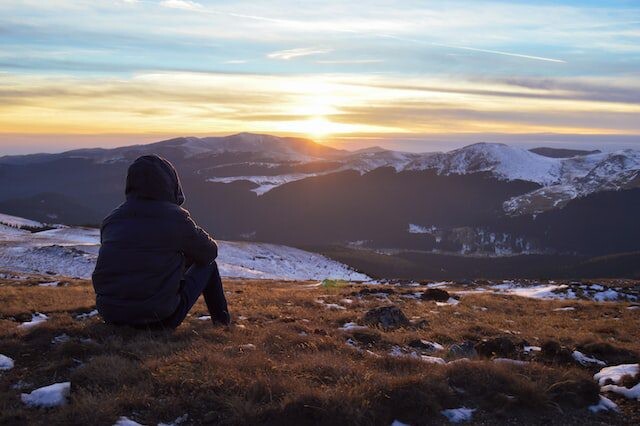
Recreational runners often race upwards of five to ten times a year, whereas professional marathoners may race their premiere distance only twice. There’s a reason they are pros–they’ve learned how to optimize their training and recovery time for maximum gain. Henninger says she takes at least two weeks off, and more if she feels she needs it.
Focus on your weaknesses (embrace the workouts you like the least)
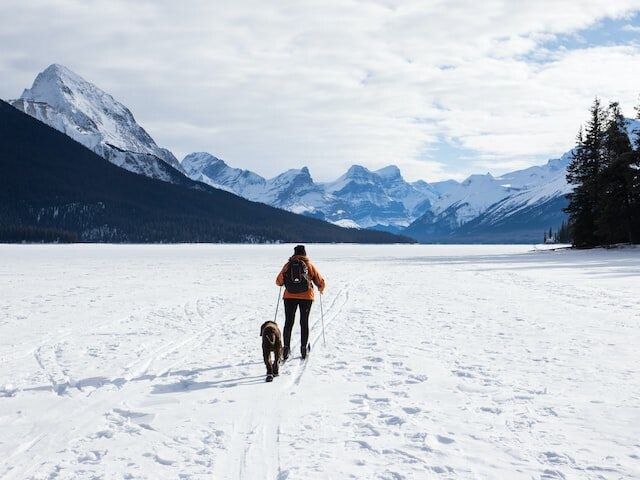
In her book Skyrunner, pro ultrarunner and ski mountaineer Emelie Forsberg (also known for being ultrarunning GOAT Kilian Jornet‘s partner) writes about how she uses contrasts in her training. “Since I have a talent for ultradistances, I put extra effort into shorter training sessions and shorter intervals,” she says. She suggests keeping it simple: running hard 1K repeats if you love going long and slow, or finding a track to run on if you favour the trails.
Your brain (and body) may rebel initially, but tapping into a new-to-you training effect will make you faster and more robust. You may be surprised by how much you learn to enjoy what you used to avoid. Stepping out of your comfort zone is also great mental training for the endless array of issues that can crop up during a race.
Stop worrying that you’ll lose your fitness: incorporate other sports and try new things
Forsberg writes, “even though I love what I do, it’s important to have other things in life, other interests.” As a runner, you may feel like running is such a part of your identity that you cannot imagine your life without it. Taking the time to tackle other physical and mental challenges during the off-season is an excellent way to diversify your physical strength (you’ll tap into muscles regular running doesn’t) and power up your brain, while giving yourself a mental break from the demands of racing goals.
Try cross-country skiing, going for a swim, or dropping into a spin class. If those things aren’t accessible or budget-friendly, diversifying can be as simple as heading out for a walk in a new-to-you area or going tobogganing with friends. Dig out some board games, dive into a new book, or try a crossword puzzle to get your brain firing–science says that learning new things is a great way to expand your brain and skill set at any age.
by Keeley Milne
Login to leave a comment
This nutritious pizza is fuel for the fastest, you might not be able to run as quickly as Kilian Jornet and Emelie Forsberg, but you can definitely eat like them
Power-ultrarunning couple Kilian Jornet and Emelie Forsberg have it all–glorious mountain miles to run surrounding their home in Norway, the launch of athletic brand NNormal, and delectable home-cooked meals baked from their small family farm. While Jornet recently won both Hardrock 100 and UTMB, Forsberg is an accomplished athlete herself and details her running journey in her book Skyrunner.
Forsberg is also the co-founder of Moonvalley, a plant-based sports nutrition company, with fellow pro runners Ida Nilsson and Mimmi Kotka. Forsberg has a simple pizza recipe that is so easy and versatile you’ll want to have it on a weekly rotation.
Homemade pizza is a family favourite at my house. Since our kids were little, my husband and I have taken turns whipping up a batch of pizza dough, pulling out whatever vegetables we find in the fridge and letting everyone create their own masterpieces. The best part about pizza is that it’s easy to cater to everyone’s unique tastes–try a double batch of dough or split this recipe into four for individual pies.
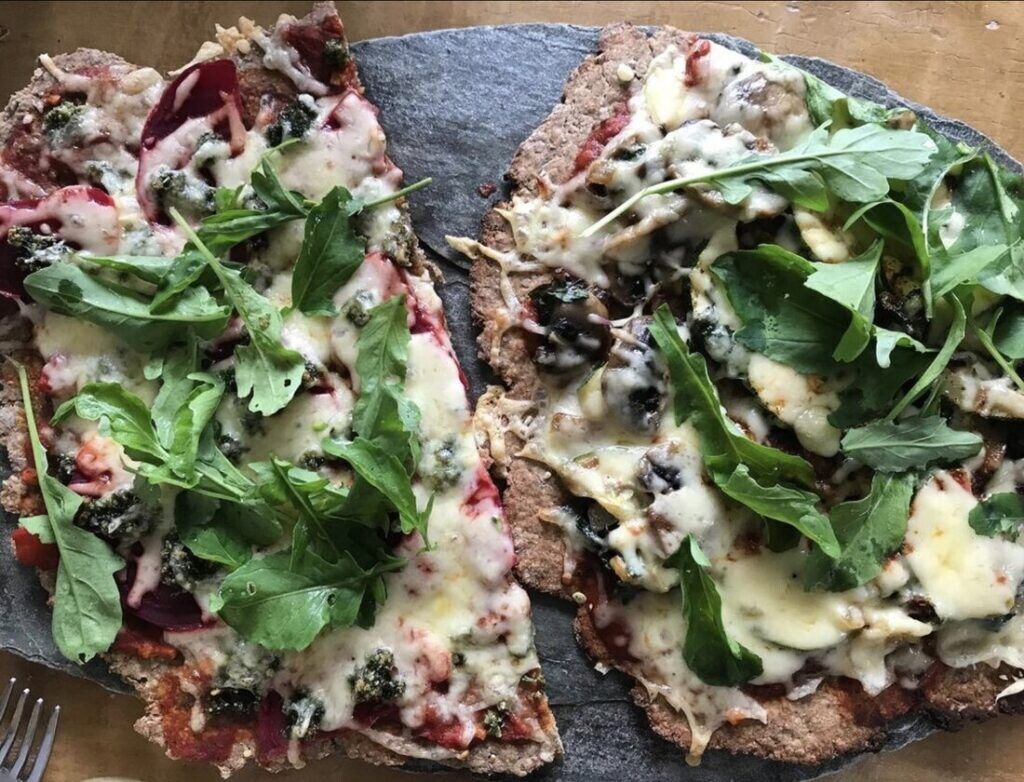
Emelie Forsberg’s ‘Fast Food’ Veggie Pizza
Ingredients (makes two pizzas)
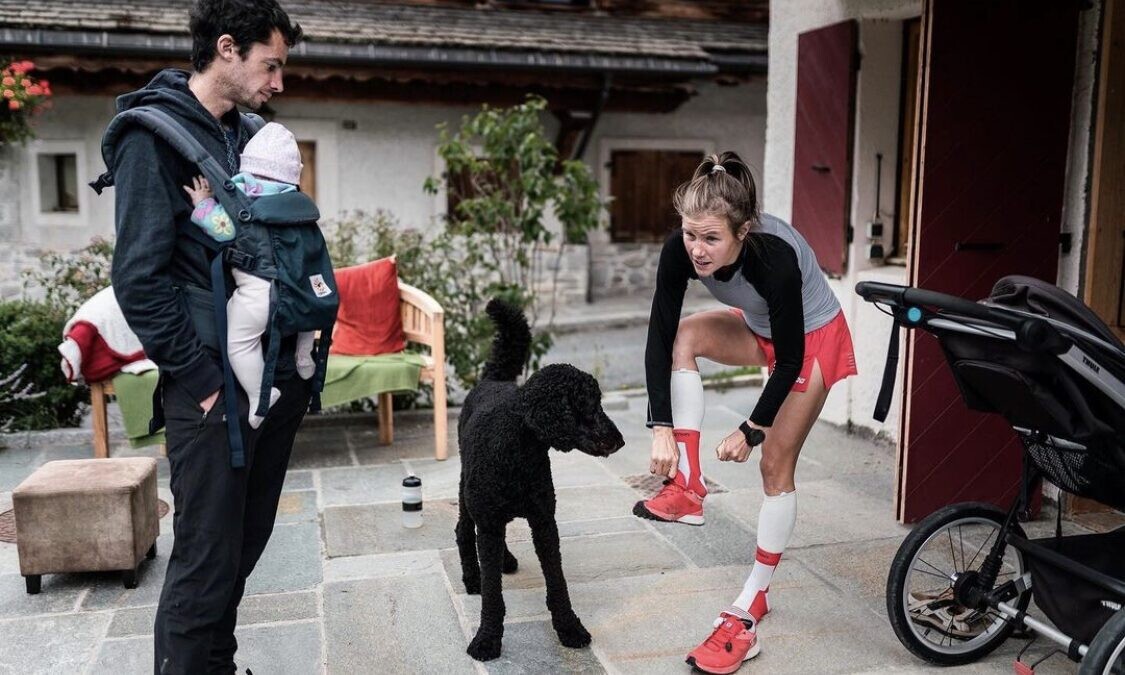
Dough:
2 1/4 cups almond flour (since there is no yeast in this recipe, Forsberg suggests any type of flour without wheat, including corn, coconut, chickpea, or a combo)
3/4 cup water
1/2 tsp salt
1/2 tsp garlic powder
1/2 tsp baking powder
1 Tbsp vegetable oil
Toppings:
assorted veggies of choice (mushrooms, beets, eggplant, tomato)
tomato sauce
cheese (can use vegan)
arugula for topping
Directions
Mix all the dough ingredients together well. Roll out the dough on some parchment paper and pre-bake it for 5 mins at 225 C (440 F).
While the dough is pre-baking, start chopping your veggies. Forsberg says she throws in what she has at home, and if she’s in a hurry will simply use plain store-bought tomato sauce.
Add tomato sauce, veggies, and your choice of cheese, and pop back in the oven at 220 C for approx 10 more minutes. Top with arugula and enjoy.
by Keeley Milne
Login to leave a comment
Kilian Jornet Isn't The G.O.A.T. of Trail Running Just Because He Wins Big Races
After Kilian Jornet won the Ultra-Trail du Mont-Blanc (UTMB) for a record-tying fourth time on August 27, it was easy to assume that running 100 miles is something that comes easy to him.
It doesn't, but it would be easy to think that because, well, it sure looked that way.
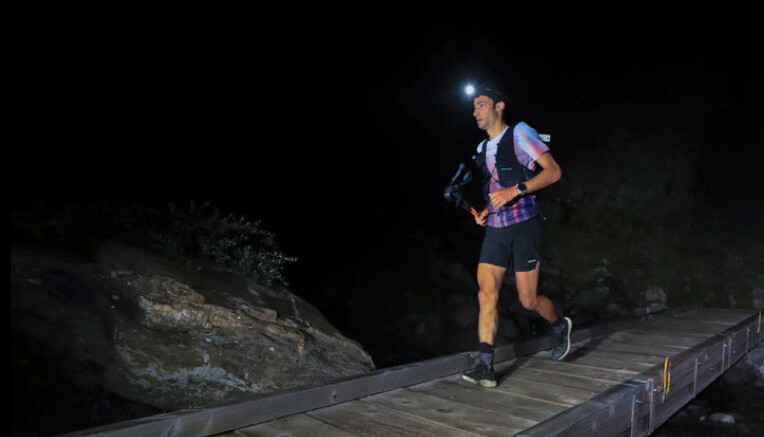
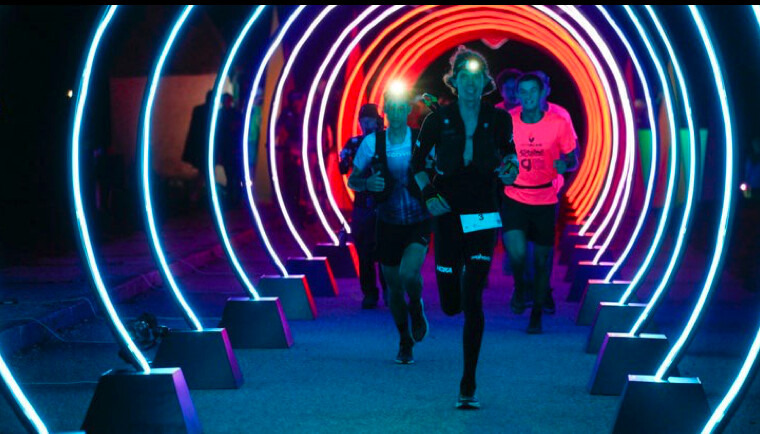
While the 34-year-old who hails from the Catalan region of Spain has long ago established himself as the G.O.A.T. of ultra-distance trail running in the mountains, he's as human as each of the other 2,300 runners who toed the line at this year's UTMB. Like his fellow competitors, Jornet felt fatigue in his legs from grinding through the 171.5km (106.5-mile) course and its 33,000 feet of elevation gain. He said he had difficulty breathing when he ran too fast or climbed too abruptly, likely the lingering effects of having just overcome Covid-19 earlier in the month.
And, like everyone else, he had to fight off low moments of mental torment, and maybe even a tiny trace of self-doubt-remember, he's human-as American rival Jim Walmsley opened up a big lead on him over the Grand Col Ferret as the course passed from Italy to Switzerland.
But what sets Jornet apart, and what has always distinguished him as an athlete, is a unique combination of physical ability, smart racing strategy and a deep connection to the mountains that allows him to move joyfully, patiently and, at times, seemingly with relative ease amid the physical anguish that comes with running such a grueling race.
But make no mistake, he suffered enroute to winning UTMB in a course-record 19 hours, 49 minutes, even if he made it look easy overcoming Walmsley and dispatching competent French contender Mathieu Blanchard.
"Since the start there has not been a single moment in which I didn't suffer," Jornet said after the race. "I knew that I needed to keep my intensity under a certain threshold where it can be heavy for the lungs, but it was no problem. But muscularly it was very hard from the start of the race."
Jornet is human, even if it took a debilitating illness to show it. But as he turned in yet another masterwork performance on the world's biggest stage, Jornet gave glimpses of what has made him so otherworldly for so long. Perhaps surprisingly, superior physicality is only a small part of it.Patience and Respect
Having already won UTMB three times and Hardrock a record-tying five times-most recently just six weeks earlier-Jornet had nothing to prove in Chamonix. In fact, if he had never toed the line or for that matter retires from competition, his legacy of epic race victories and Fastest Known Time (FKT) records on some of the most difficult trails and biggest mountains around the world would stand the test of time.
But that brings up another element that makes Jornet great is that he has always run as if he had nothing to prove. Sure, he's a competitive athlete, but his focus seems to be more about immersing in the zest of competition and the life-affirming bliss he's always felt in the mountains.
For Jornet, the destination truly is the journey, not the outcome. That adventure-oriented focus was something he learned in his youth growing up in the high-alpine environment of the Cap de Rec mountain refuge in the Spanish Pyrenees, where his dad was a mountain guide and his mom was a ski instructor. He climbed his first peak at age 3 and started competing in ski mountaineering races at 12.
Along the way, he developed a grounded sense of presence in the mountains that has allowed him to remain calm and bide his time in ultra-distance races-especially more rugged mountain races like UTMB and Hardrock. Instead of going all-out from the front, he typically follows a more fluid strategy of just staying in contact with the lead group and letting the race play out a bit as the terrain dictates before becoming hyper-competitive.
Contrast that to Walmsley, who has been hellbent on becoming the first American man to win the race with a front-running mentality, countryman Zach Miller, who returned after injuries and Covid-19 kept him away from continuing the same pursuit for three years, and the hard-charging Blanchard, who was eager to steal the show and make a name for himself in front of a supportive mostly French crowd after a robust third-place finish in 2021.
Even when Jornet was younger, he ran with maturity and wisdom beyond his years, always earnestly clinging to the premise that the experience of racing-and sharing it with his competitors, not to mention spectators and volunteers when possible-is always more important than the actual race itself.
When Walmsley built a big lead with a strong power-hiking surge up the Grand Col Ferret, Jornet was seemingly content, at that moment, to ease through the highest point of the course, chatting at times with volunteers, fans and videographers in French, Spanish or English as he had done at times earlier in the race. In previous UTMB races, he's burst ahead on the switchbacks up Grand Col Ferret and other steep climbs on that course, only to stop on top and wait for his competitors to catch up while gazing at the stars or picking mushrooms with children.
"At Hardrock this year, when I saw him on top of Grant Swamp Pass, he stopped in the middle of the race just to chat with me because we hadn't seen each other in a while," Miller says. "That's just the way Kilian is."A Versatile Mountain Athlete
Jornet has a much more diverse set of athletic skills and abilities than most ultrarunners. In addition to winning ultras, Jornet was a multiple world champion in ski mountaineering and SkyRunning in his twenties. He also set a host of new speed ascent marks and roundtrips on Mt. Kilimanjaro (Tanzania), Aconcagua (Argentina), Mont Blanc (France) and the Matterhorn (Switzerland). Although he missed in his attempt to set a new FKT on 29,032-foot Mt. Everest in 2017, he actually summited the world's highest mountain twice in six days without supplemental oxygen.
When he was a few years younger, he set a new record on the 171-mile Tahoe Rim Trail in California and Nevada and posted the fastest-ever time up the steep, rocky 1.3-mile Mt. Sanitas Trail in Boulder, Colorado.
"Kilian is a beast," says Francois D'Haene, the other four-time UTMB winner who last year became the first to win Hardrock and UTMB in the same summer. "When it comes to Vertical K races and distances from 40K to 100K, I think there is no competition between us. He's faster than me and stronger than me, especially on technical terrain."
Aside from long-and-rugged Hardrock and UTMB, Jornet won the shorter and much faster 42km Zegama Alpine Marathon in Spain and placed fourth in the 31km Sierre-Zinal village-to-village race in Switzerland in August. A lot of it has to do with the fact that he still trains in much of the same fashion as he did as a kid, often focusing more on fun, hard, playful days of adventure on foot or on skis as much as he does structured high-performance workouts.
"Kilian is unique in the range that he can cover," Miller says. "As a runner, his ability to switch back and forth from something like Zegama to Hardrock to Sierre-Zinal to UTMB is just incredible. And because of that ability, I think he's a bit of a mad scientist when it comes to training. He kind of turns himself into a guinea pig and trains in ways other guys might not be willing to for fear of overtraining."
All of that translated into Jornet's ability to win this year's UTMB despite trailing Walmsley by about 15 minutes at the 126km aid station at Champex. When the surging Blanchard caught him and quickly left the aid station, Jornet's competitiveness and mountain practicality started to fire up. They passed Walmsley and gapped him and then ran stride for stride over the ensuing 2,300-foot climb from the village of Trient down into the ski town of Valloricine.
Finally, after leaving the 153km aid station at the same moment as Blanchard, Jornet surged on a gently sloped 4km section of trail to the base of the final 2,600-foot climb up Tte aux Vents. Blanchard got a first-hand view of the master at work and all he could do was watch him run away to victory and hold on for second place.
"Running from Champex with Mathieu, I knew I was stronger going up but that he was catching on the downhills," said Jornet, who has lived in Norway for the past several years with his wife, Emelie Forsberg, and their two young children. "Once we got to Valloricine, the strategy was to push very hard up the final climb to Tte aux Vents and then manage the lead. I had about an 8-minute lead and I was feeling comfortable with it, but in a ultra race you never know, many things can happen."A Transcendent Athlete
At some point a conversation about Jornet should transcend trail running and include the similarities he shares with other great athletes who have had a similarly dominant presence in other sports. And yes, that means Tom Brady, Michael Jordan, Lindsay Vonn, Eddie Merckx, Michael Phelps, Ann Trason, Lynn Hill, Kelly Slater and Eliud Kipchoge.
Why not? Like each of those all-time athletes, Jornet has consistently risen to the occasion at the biggest moments of his career, not only because he physically outclasses the competition, but also because his intellectual prowess as an athlete and his ability to outthink, outwit and outlast them. It's not that he wins everything-although he's won the vast majority of his races since winning UTMB as a 20-year-old in 2008-it's more that he's been competing at the highest level for 15 years and hasn't regressed and has rarely had bad days.
In 2017, he had a rough go of it in the UTMB and finished second to D'Haene and in 2018 he dropped out after inflammation and pain caused by a pre-race bee sting made it difficult to keep running.
"Even his bad races he performs well, and I think that's what makes Kilian special," says Walmsley, who finished fourth at UTMB this year. "Whether it's a bad moment or a bad race, he's always still competing at a really high level. I have raced him twice at UTMB and both times I have thought I have found a crack, but I haven't been able to hold onto it."
Until recently, Jornet might have been viewed solely for his athletic. But with his bold move this year to break away from longtime sponsor Salomon and begin a new environmentally friendly trail running shoe brand called NNormal (with Spanish footwear brand Camper), he's not only begun to hone his entrepreneurial spirit in the world of business but also to make an impact as the environmental steward he's always been.
It's a path only a handful of high-level outdoor athletes achieved success at after making their mark in their sport disciplines, most notably Yvon Chouinard, a climber, surfer and kayaker who founded Patagonia in 1970.
Jornet ran all of his races this year in the same model of NNormal shoes that will be available at running shops and online this fall. It's a uniquely designed shoe that's balanced under the midfoot to promote midfoot and forefoot running gaits, but with enough cushioning to run with a heel-striking stride, especially on downhill sections of a trail. A thin polyurethane plate provides protection from rocks and some energy return, while a proprietary version of a Vibram Litebase Megagrip outsole serves up secure traction.
That all might sound pretty standard, but Jornet really wants his NNormal shoes to stand out for their durability. He and his colleagues have gone to great lengths to source long-lasting components, but they've also designed the shoe to be deconstructed so it will be easy to re-sole, repair or recycle it after hundreds of miles of wear and tear. It's all part of NNormal's No Trace philosophy that is all aimed at transparently designing gear with the smallest carbon footprint possible.
"There are a lot of good guys in the sport, but in [my] mind, Kilian is the king of the sport," says Miller, who was the fifth finisher at UTMB this year. "He sets the tone for the entire sport and [is] a great representative of the sport."
by Trail Runner Magazine
Login to leave a comment
Kilian Jornet Co-Founds New Brand, NNormal
Mountain running legend Kilian Jornet has announced his newest venture: an apparel and outdoor equipment company called NNormal.
The brand's creation was announced last month, a partnership between Jornet and Spanish footwear company Camper. According to the brand's website, the company name comes from locations of the designing and testing of products in Mallorca, Spain, and Norway, respectively (Nor + Mal). Jornet, who is originally from Spain, now lives in Norway.

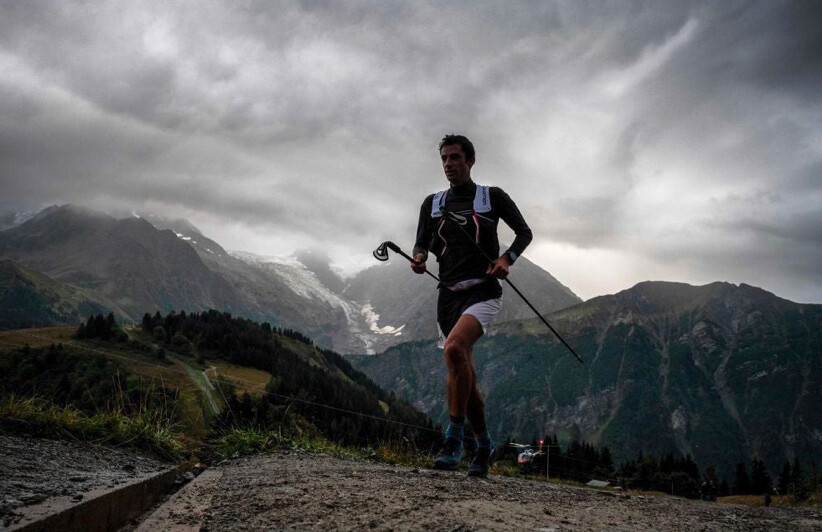
According to the brand's website, the first line of NNormal products - set to include shoes, apparel, and accessories - will launch this fall, both online and in specialty running stores in Europe and North America. Additional members of the NNormal athlete team are also set to be announced in the coming weeks and already include Swedish athlete Emelie Forsberg, Jornet's partner.
While no products have been made available yet, NNormal's website notes that the first line is currently being tested, and that co-founder and first brand ambassador Jornet will wear the gear during his 2022 racing season, ostensibly including his seventh appearance at UTMB this August. Jornet split from longtime sponsor Salomon last year with an announcement that he would be turning toward a new venture, rather than signing with another existing company. Until recently, he had given few other details.
A Focus On Sustainability
NNormal's slogan, "Your path, no trace," alludes to Jornet's activism and dedication to environmental sustainability, and in a video on the website, Jornet outlines the mission and plans for the new company, including that all of its products should be reusable, repairable, or recyclable.
"Whatever we produce, it has a negative impact on the environment," says Jornet in the video. "Transparency is necessary to be honest about what we are doing well and what we should improve. How our company is contributing to climate change, to biodiversity loss, to introducing new chemical elements to nature, to ocean acidification, to land use, and to freshwater consumption, should be studied."
Jornet's partner business, Camper, was founded in Spain in 1975, and is currently headed by Miguel Fluxa, whose family has been crafting shoes for four generations. Camper has laid out ambitious sustainability goals itself, including 100% recycled or circular packaging, 100% of products made with recycled or renewable materials, and 100% ethically trusted and verified supply chain members by 2025, as well as net-zero emissions by 2050.
"So, how do we approach, at NNormal, our environmental responsibility?" said Jornet in the video. "Our DNA is to work on functionality. Our products are made to be used in multiple activities, and to be worn. Durability: to ensure that with this functionality, they can last the maximum. And repairability: to prolong the life of each product. Our end goal is to work toward real, circular products, leaving no trace in our path."
In the video, Jornet goes on to note that the brand's apparel is fully designed and created in Europe with materials from European producers, but that footwear will be manufactured in Asia, at least at first, due to better industrial capacity for producing performance shoes in that area of the world.
"Our goal is to produce more in Europe in the future, and for that we must invest in creating infrastructure and the know-how for it," Jornet says. "We are building long-term relations with our partners and providers to ensure the environmental and social levels of all our supply chain[This] means our internal emissions, but also from our external partners, such as factories, materials, et cetera, and working on reducing it with the goal of having the lowest emissions possible, and compensating the rest of emissions to become carbon neutral."The Goal? Better, not more.
Jornet notes in the video that in the interest of producing less waste and more timeless products, NNormal will include unisex color schemes, emphasize multifunctionality of products so that they can be used for more activities, and limited new releases, creating new designs only if better materials or strategies are identified, rather than releasing revamped editions each year.
The company plans to pursue the highest possible certifications in social and environmental responsibility, notes Jornet, including being a 1% for the Planet member and dovetailing with the work of Jornet's own Kilian Jornet Foundation, which supports environmental projects such as the World Glacier Monitoring Service and the science education work of the Athlete Climate Academy.
by Trail Runner Magazine
Login to leave a comment
Kilian Jornet partners with Coros wearables
The world-class GPS watch company Coros has partnered with two new athletes to expand their trail and mountain running audience. World sky-running champions Kilian Jornet and Emelie Forsberg are the newest pro-athletes to represent the company.
The strategy behind the partnership is Coros’ commitment to helping athletes train and perform at the highest levels. Coros continues to cement itself as the leader in athletic performance-focused wearables, as Jornet and Forsberg join a growing roster of truly world-class athletes that include marathon world record holder Eliud Kipchoge and Olympic bronze medallist Molly Seidel.
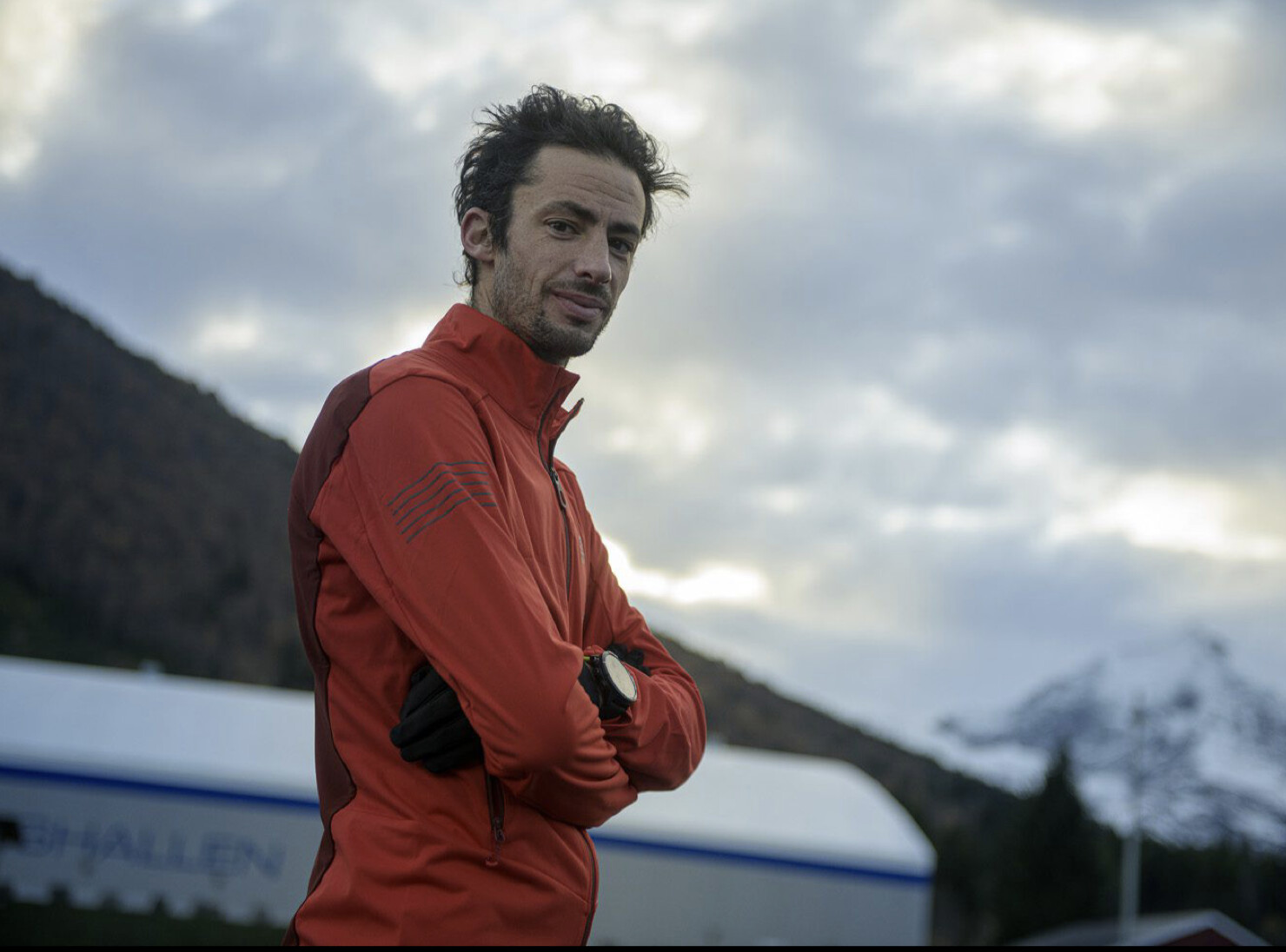
Jornet has significant goals for 2022, as the three-time UTMB champion to returns Chamonix, France, for another crack at glory. Jornet, who recently left his sponsor Salomon, will also be competing at Hardrock, where he is a four-time champion, and Sierra-Zinal, which he has won nine times (including the last five editions).
Forsberg, who is Jornet’s partner, has the women’s FKT up and down from Mont Blanc in 7:53:12. Forsberg was the world sky-running champion in 2014 and is making a comeback to the sport after the birth of her second daughter in April 2021.
Drawn by its light weight, size and the inclusion of mountain-compatible features, both Jornet and Forsberg will wear the Coros Apex Pro as their primary GPS watch. The Coros Apex Pro features Ski Touring mode with auto ascent/descent detection, SpO2 (pulse oximeter) sensor with specially designed altitude mode, trail running mode and more…
by Running Magazine
Login to leave a comment
Kilian Jornet is always up to something and this ultra feat might top his list
Kilian Jornet is always up to something: Breaking the records for the fastest ascent and descent on Mount Everest, winning some of the biggest ultramarathons in the world—including the 2017 Hardrock Endurance Run in a sling—and living his best life with his wife Emelie Forsberg in the mountains of Norway.
This time around, Jornet challenged his ski partner and world-class BASE jumper Tom Erik Heimen, 44, of Norway, to a race up and down one of the most-iconic climbing mountains in the world: Romsdalshorn. Sitting at more than 5,000 feet, both would have to climb up between 1,300 to 1,500 feet and descend to be declared the winner—Jornet doing so on foot and Heimen BASE-jumping down to the bottom.
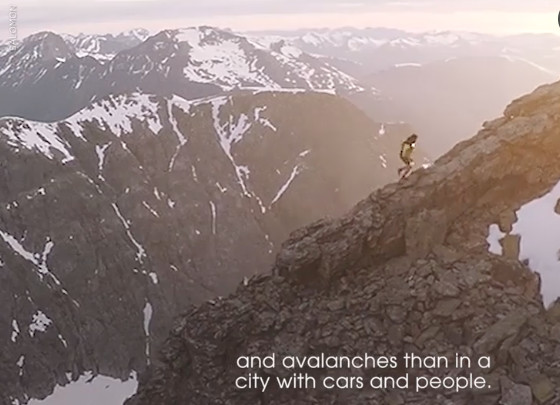
Both took separate routes. Jornet went up the north face and climbed down Halls Renne on the other side while Heimen went up Halls Renne and BASE-jumped off the north face. This way, the two would cross paths during their treks.
“It was very unpredictable who would be faster,” Jornet said about the challenge. “I knew I could climb much faster, but the downhill is down climbing so it takes as much time as going up for me. And I also knew that Tom Erik [has] a very good physical level, so he would be quick to climb and of course very fast on the way down.”
As you can see in the video, Jornet has no issue ascending, finishing in just over 30 minutes before beginning his descent. Heimen reached the top 15 minutes after crossing paths with Jornet during his descent and quickly suited up for his jump.
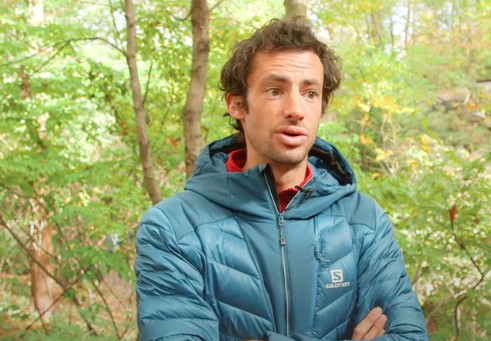
Heimen hit the ground two minutes after takeoff, but Jornet made it to the bottom in a time of 52:26. Heimen’s time was 53:55.
“What surprised me most with the challenge was how fast Kilian is descending the technical and steep Halls Renne with the challenges of loose rocks all the way,” Heimen said. “I know he is very fast going up, and had no doubts that he would beat me to the summit, but I was expecting him to spend more time climbing down than climbing up.”
Jornet’s latest antics add to a constantly growing number of wild races and feats that runners are attempting like Nick Symmonds going for the fastest mile while dribbling a basketball, Mario Mendoza’s 50K treadmill record, or Cynthia Arnold smashing the triple-person stroller marathon record.
Who knows what we’ll see next?
<iframe width="560" height="315" src="https://www.youtube.com/embed/6dgm5MQPGz8" frameborder="0" allow="accelerometer; autoplay; encrypted-media; gyroscope; picture-in-picture" allowfullscreen></iframe>
by Runner’s World
Login to leave a comment
Kilian Jornet crushed Sierre-Zinal, and has now set his sights on Pikes Peak
Ten years ago, a 21-year old Catalan trail runner showed up in the end-of-the-valley village of Zinal, in Switzerland’s Valais Canton, not far from the Italian border. He had a list with him.
“It was just a sheet of paper with names of races,” says Chamonix, France-based trail-running author Alain Bustin. “It wasn’t races he wanted to win, or course records he wanted to break. All he wanted to do was take part. Sierre-Zinal was on the list.”
Even then, Sierre-Zinal was iconic. The 31-kilometer race that started in the valley village of Sierre and finished in Zinal was already established as one of the most competitive trail races in the world. And that year, the young runner won.
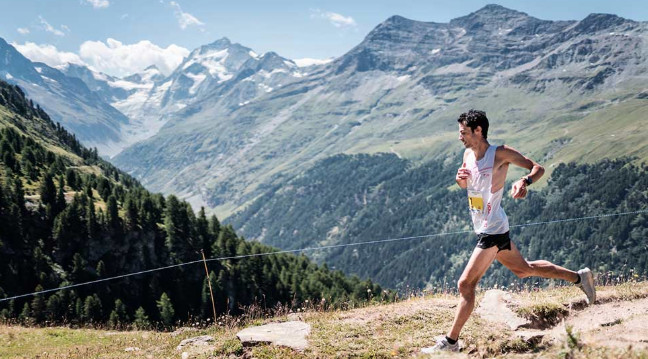
A few weeks later, he won the 171-kilometer Ultra-Trail du Mont-Blanc.
That runner, of course, is Kilian Jornet. And last weekend in Zinal, he won “S-Z” for a seventh time, further surpassing Mexican runner Richardo Meija’s five wins between 1998 and 2005. And this time Jornet did something that no one had done in 16 years. He broke one of trail-running’s most-coveted course records with a time of 2:25:35—not by seconds, but by 3 minutes 37 seconds.
The 2:29:12 record had been held all those years by the New Zealander Jonathan Wyatt, now 46, indisputably one of his generation’s greatest mountain runners. Starting more than two decades ago, Wyatt began racking up records from the Alps to the United States, at races as diverse as Switzerland’s Jungfrau Marathon (2:49:01 in 2003) and New Hampshire’s Mount Washington Road Race (56:41 in 2004.) Both are still course records.United States runner Jim Walmsley had a notable success, finishing third in his first running of the famed course, in a time of 2:31:52—a result that in any other year would likely have had him breaking the finish-line tape.
While Sierre-Zinal is arguably one of the most competitive trail races in the world, and much of the attention focusses on the elite runners, it has a wide and diverse following. This year, more than 5,000 runners took part. Recreational runners started five-and-a-quarter hours earlier, a special aspect of the race-day schedule that allows recreational runners to watch elites arrive, several hours after most of them have crossed the finish line.
Nicknamed “The New York Marathon of the Alps,” the race’s rich history makes for a special day for runners from around the world. It’s a vibe that was felt by runners like Mike Ambrose, formerly the North American Marketing Manager for Salomon, and now based out of the company’s world headquarters in Annecy, France.
“Running across that ridgeline with the flowy singletrack, I felt the legends before me,” says Ambrose. “That’s the first time ever in a race that I was putting myself out there with the greatest and the pioneers of the sport. Maybe I wasn’t running at the same speed, but I was part of the history. I actually felt that energy. “
For Jornet, there are few records left to shatter. At age 31, he has Fastest Known Times from the Matterhorn to Mount Everest. He has won trail running’s most prestigious races, some of them multiple times, with course records around the world. It’s hard not to imagine that Jornet might begin to turn his attention to other projects. With Skyrunning Champion Emelie Forsberg, he now has a five-month-old baby—and an energetic labradoodle, Maui, to boot.
As he watched Jornet from a jumbo screen not far from the Sierre-Zinal finish line, Bustin, a longtime acquaintance of Jornet’s, was in a contemplative mood. “Kilian, he’s not just special because of his records at Sierre-Zinal or the UTMB,” he said. “He’s broken mountaineering records and ski alpinism (ski mountaineering) records, too.”
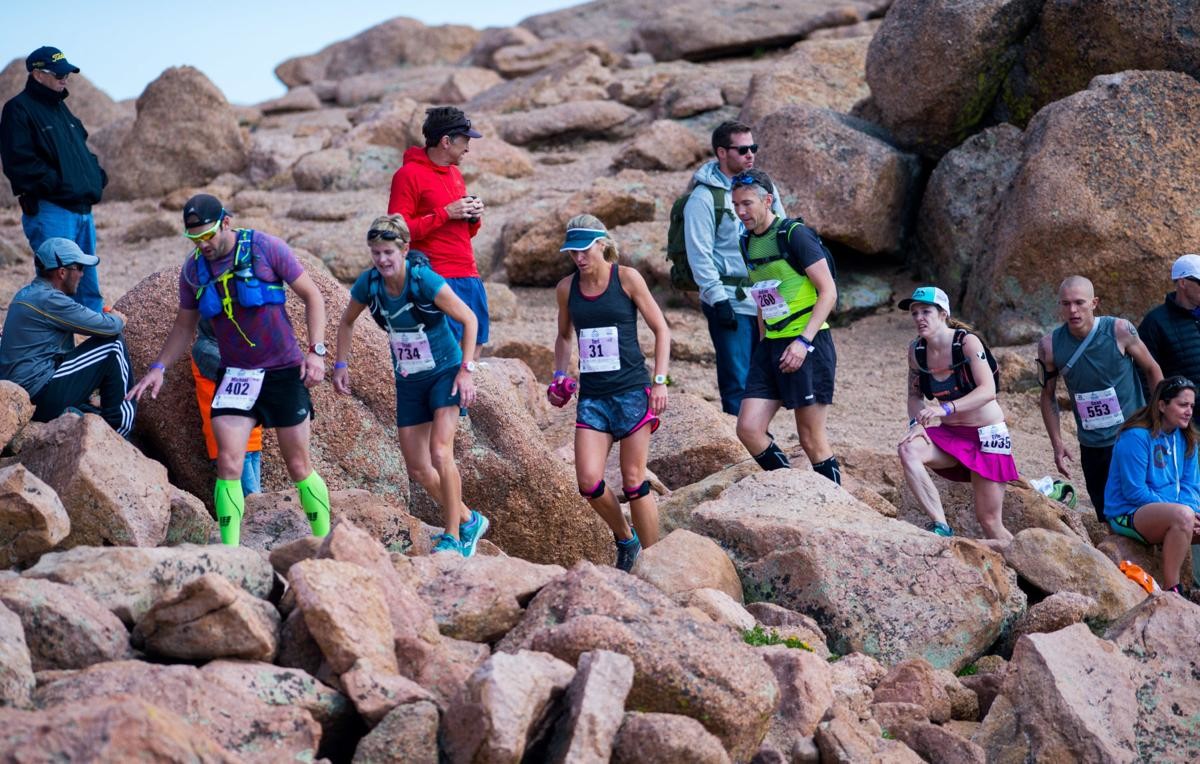
Bustin paused with thousands of other onlookers, as race officials announced to the crowd that Jornet was now 20 seconds ahead of Wyatt’s historic course record. On the screen, Jornet looked fluid and in control, calmly, steadily, smoothly “running the tangents” along a rocky section of the course.
“He’s a fantastic guy, with a great mentality about mountain sports. Maybe he’s about to say to the young runners, ‘Hey guys, I’ve done my time. Now it’s up to you,’” added Bustin. Taking in the weight of what he had just considered out loud—that the world’s greatest trail runner could soon be winding down his long stretch of highly competitive racing days—he looked back up to the screen, saying to no-one in particular, “He has nothing to prove to anyone.”
Well, maybe not quite. There is, arguably, at least one notoriously difficult-to-beat record remaining: Colorado’s Pikes Peak Marathon. In 1993, Matt Carpenter set a confoundingly fast course record there, with a time of 3:16:39. On August 25, Jornet will be there. It’s hard not to imagine he wouldn’t like to cross the tape with a time quicker than Carpenter’s. The trail-running world will be watching.
Login to leave a comment
Pike's Peak Marathon
A Journey to the Top and Perhaps Back The Pikes Peak Ascent® and Pikes Peak Marathon® will redefine what you call running. Sure, they start out like a lot of races on Any Street, USA. But your first left turn will have you turning in the direction of up! During the next 10 miles, as you gain almost 6,000...
more...




